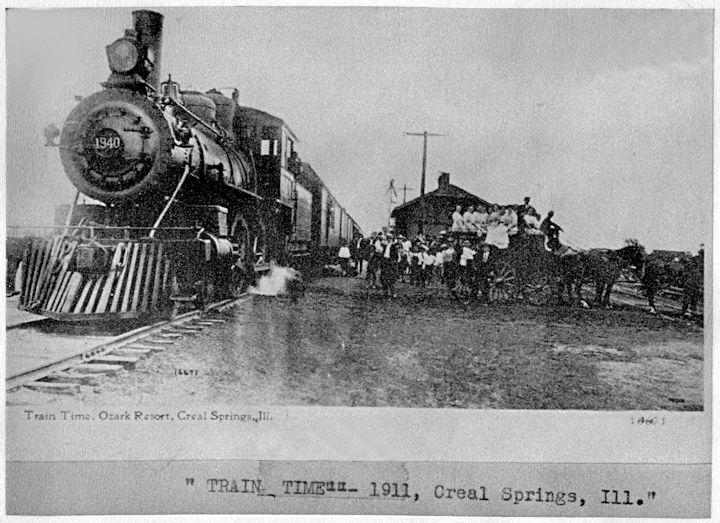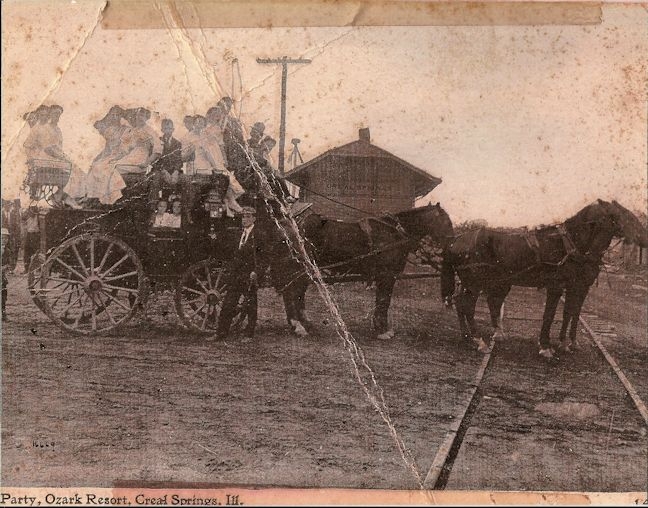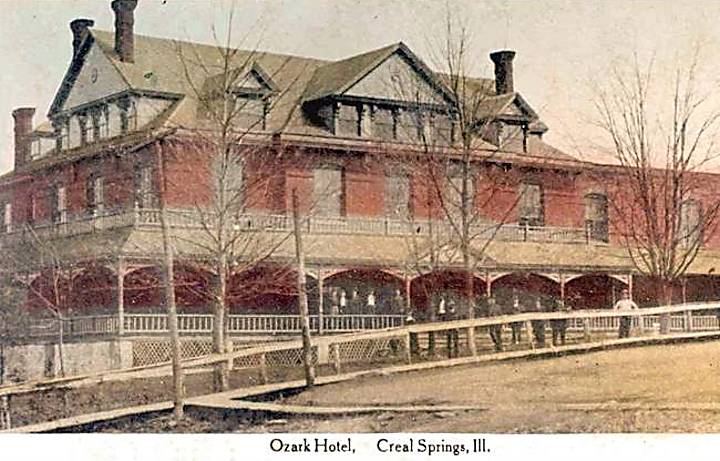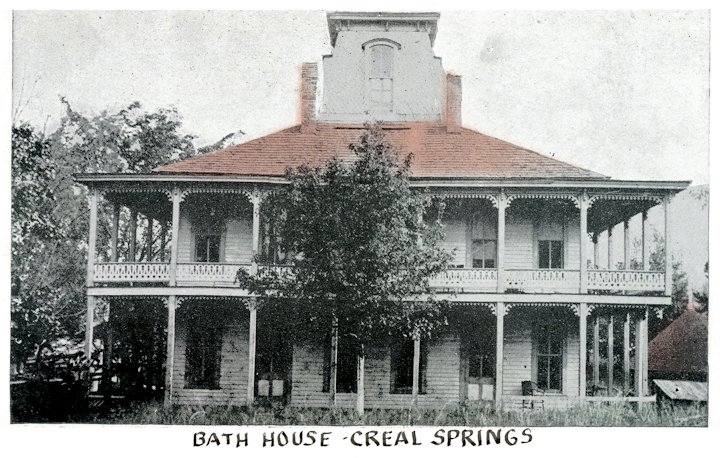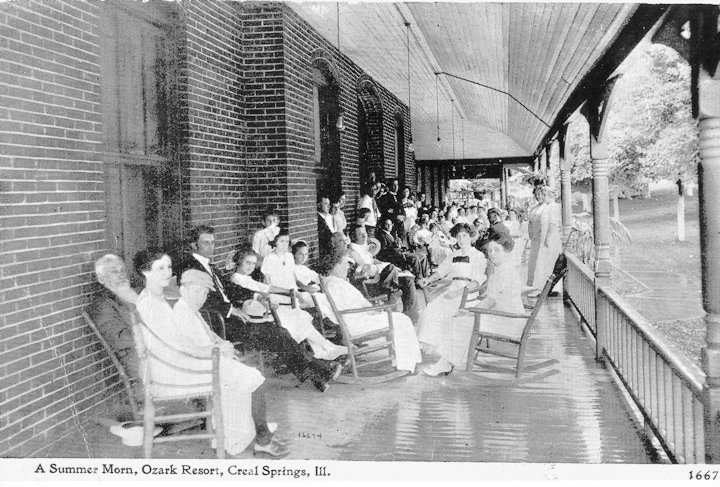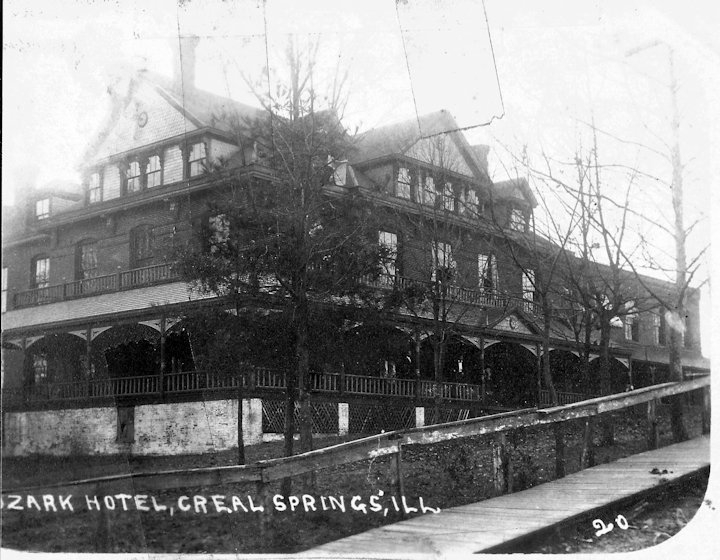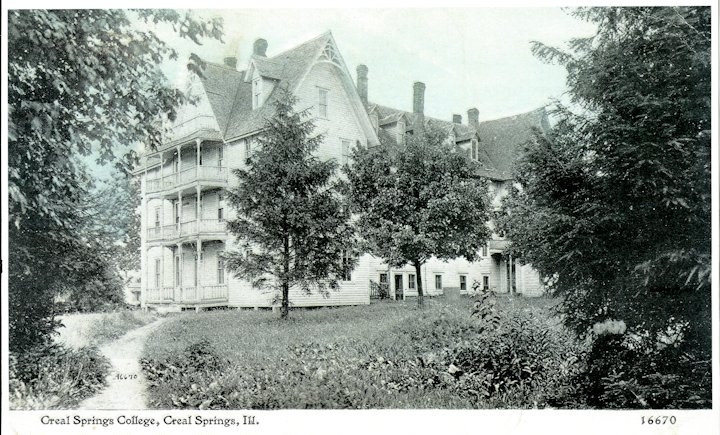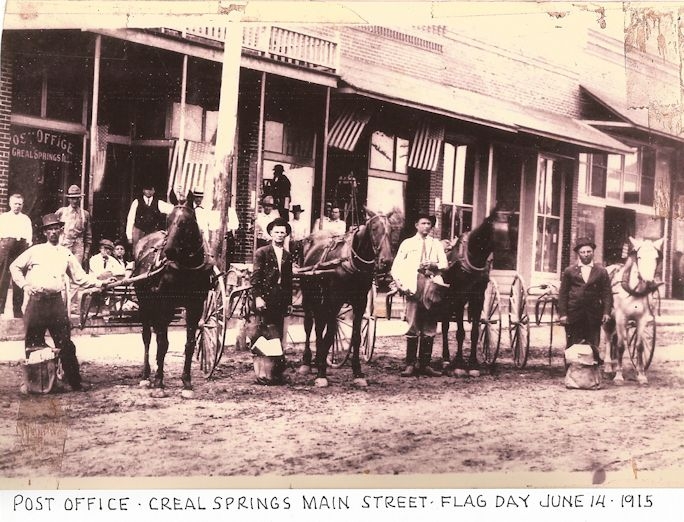Creal Springs, a village in sections 25 and 26 of the township so named, boomed as a summer resort when Edward G. Creal discovered the mineral springs on his farm. The original plat of the village was on Mr. Creal’s land in section 25, but other surveys and additions soon increased its size. Line Street, the main north and south street of the village, runs along the section line.
The medicinal qualities of the waters were discovered in 1881 when a new spring opened. But the French traders of the eighteenth century knew about the springs, and called their shelter in the neighborhood Eau Mineral. A French trapper occupied it when the Americans came to the county.
The village was incorporated August 10, 1883 shortly after a post office was obtained by transfer of the Sulphur Springs office, established in 1846 and moved by Postmaster Allison Clark with a change of name February 8, 1883. The first house in the village was built in November 1882, and within four years 700 health seekers had flocked to the place.
Dr. Curtis Brown left his practice in Herrin’s prairie in 1883 and erected the first resort at the springs, Brown’s Creal Springs Hotel, which he operated four years. George B. Chamness opened the East side hotel in the fall of 1885. From these beginnings grew the great Ozark hotel with its pavilions and bath houses.
Extension of the railroad from Marion to Brookport gave fresh impetus to the boom. Trains were operated January 1, 1889. Creal Springs was incorporated as a city August 12, 1892.
Civil war veterans found Creal Springs an ideal place for their final, pensioned days, and at one time more than ten per cent of the city’s population could boast of military service. Now (in 1939) John H. Hutchinson, aged ninety-one, is the last man, and also the last survivor of Logan’s famous regiment, the 31st. He fought at Vicksburg, Lost Mountain, and Atlanta, and marched with Sherman to the sea.
A Grand Army of the Republic post, 677, was organized among these veterans September 3, 1889 with A.B. Davis as first commander. Officers elected the first of the next year were S.M. Fowler, J.L. Ford, A.J. Stewart, J.N. Parks, and J.T. Johnson. The post was named in honor of Barron DeKalb Caplinger, sergeant in Company H, 81st infantry, who preferred death in the stockade at Andersonville to release without his fellow soldiers. Sergeant Caplinger was a blacksmith at Canaville when he enlisted, and a son of the blacksmith at Caplinger’s pond. The sergeant’s son, Calvin DeKalb Caplinger, was a resident of Creal Springs until his death in a hunting accident.
The G.A.R. post was dropped in 1929, when it had only eight members. Final officers were B.H. Greer, F.D. Purcell, John Cason, and W. H. Phelps.
Edward G. Creal (1835-1891) for whom the town he founded was named grew up on a farm in the neighborhood. His father, Elijah Creal (1795 1856) was captain of a flatboat fleet engaged in the tobacco trade on the Mississippi until 1846 when he came to Illinois to farm. The son bought the farm that became part of the site of Creal Springs when he married, and worked there all his life save for the years of the Civil war he spent in the 6th Illinois cavalry.
See also, Sulphur Springs History
(Extracted from Pioneer Folks and Places, Barbara Barr Hubbs, 1939)

